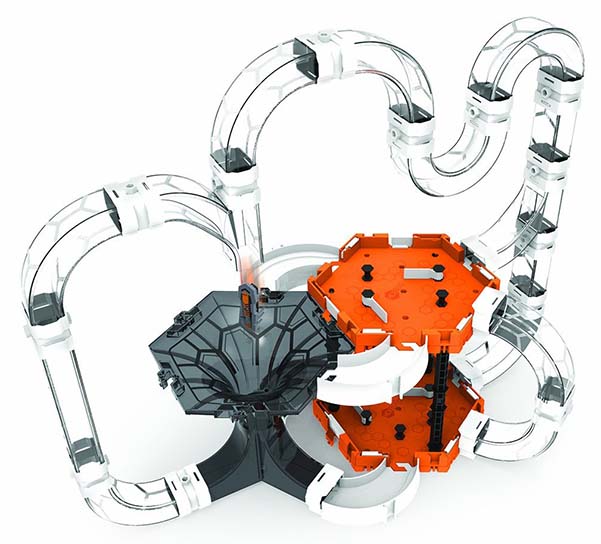HexBug Nano v2
They can climb
 Introducing an all new breed of gravity defying Hexbug Nanos. These Nano V2 bugs can now climb up vertically, horizontally, around corners, through loops and tubes, to the tip top of any Nano V2 habitat set. The HEXBUG Nano V2 Hurricane set features an evolved Nano, sporting a new look, with three rubber spines on its back, as well as a new system of tubular tracks that highlight the Nano V2's unique multi-level climbing abilities. The HEXBUG Nano V2 is a tiny, micro robotic creature that uses the physics of vibration to scurry up through multiple levels of tubes, as high as the V2 set will take it, to explore its environment. The quick little critter possesses an uncanny sense of balance, capable of crawling through tubes on its feet or on its back and can pass another bug in a single tube to avoid a traffic jam. The Nano V2 will even flip to its feet when landing on its back on an open flat surface.
Introducing an all new breed of gravity defying Hexbug Nanos. These Nano V2 bugs can now climb up vertically, horizontally, around corners, through loops and tubes, to the tip top of any Nano V2 habitat set. The HEXBUG Nano V2 Hurricane set features an evolved Nano, sporting a new look, with three rubber spines on its back, as well as a new system of tubular tracks that highlight the Nano V2's unique multi-level climbing abilities. The HEXBUG Nano V2 is a tiny, micro robotic creature that uses the physics of vibration to scurry up through multiple levels of tubes, as high as the V2 set will take it, to explore its environment. The quick little critter possesses an uncanny sense of balance, capable of crawling through tubes on its feet or on its back and can pass another bug in a single tube to avoid a traffic jam. The Nano V2 will even flip to its feet when landing on its back on an open flat surface.
Micro robotics has undergone a transformative journey since its conceptual inception. Originating in the latter half of the 20th century, the field was initially dominated by research into miniaturizing motors and mechanisms, seeking ways to replicate the motions and functions of larger robots on a smaller scale. With advancements in materials science, particularly with the discovery and manipulation of smart materials, micro robots started harnessing phenomena like piezoelectric effects for locomotion. As we delved into the 21st century, innovations in microfabrication and MEMS (Micro-Electro-Mechanical Systems) allowed for even more intricate and precise robot designs. Integrating principles from biology, bio-inspired micro robots modeled after bacteria, insects, and other microorganisms emerged, showcasing efficient locomotion in complex environments. Coupled with rapid progress in microcontroller technology and sensors, these robots evolved from simple demonstrators to tools with real-world applications, including medical interventions, environmental monitoring, and more.
